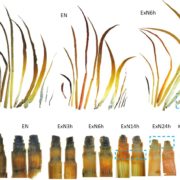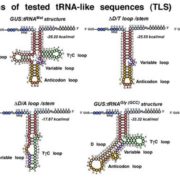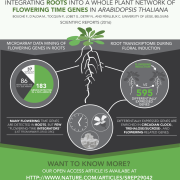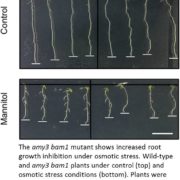
Best of 2016: Top Topics in Plant Physiology jounal
We’ve highlighted some of the Plant Physiology papers that were widely shared, liked, blogged, retweeted and otherwise garnered high-levels of attention this year. Perhaps you can use some of that holiday-season quiet time to catch up on those you missed.
The breakaway attention-getter from Plant…

The 12 Principles of Plant Biology
0 Comments
/
The 12 Principles of Plant Biology Are…
A FRAMEWORK for understanding and appreciating the critical roles of plants to create, improve and sustain life
A GATEWAY to exploring the fascinating intricacies of plant science through inquiry and scientific thinking
ALIGNED with the Next Generation Science…

The Microfarm: Organic Gardening for Anyone
A year round organic aquaponic garden with almost no maintenance. Half of the profits go to schools. Springworks has partnered with Cultivating Action to help integrate more aquaponics and sustainable agriculture education in schools. You can check out our campaign at: igg.me/at/microfarm
About…

Communicating Effectively with Graphics
Frédéric Bouché, a postdoctoral research with Richard Amasino at the University of Wisconsin, recently caught our attention when he published a set of impressive visual abstracts to support his latest research papers. We invited him to share how and why he makes these images. -Editors
When you…

iGRAD-Plant, the International Graduate School for Plant Science
Last week I was a guest of the PhD students of the iGRAD-Plant program, based at Heinrich Heine University (HHU), Düsseldorf (Germany). The program is an international joint PhD program with the nearby Research Center Jülich and the Genetics Program of Michigan State University. The program is funded…

Counting Carbs: Tracking Fluctuations in Starch-Derived Metabolite Levels Uncovers Their Crucial Roles in Osmotic Stress Tolerance
IN BRIEF by Jennifer Lockhart jlockhart@aspb.org
At first glance, starch is just an inert, calorie-laden material produced by plants to store excess carbohydrates derived from photosynthesis. Starch accumulates in leaf mesophyll cells during the day and is metabolized at night. The precise circadian…

Ticket to Ride: tRNA-Related Sequences and Systemic Movement of mRNAs
IN BRIEF by Jennifer Mach jmach@aspb.org
Movement of macromolecules through the plant phloem provides a mechanism for long-distance signaling that plants use in development, disease resistance, and other adaptive responses (reviewed in Spiegelman et al., 2013). For example, full-length RNAs, such…

